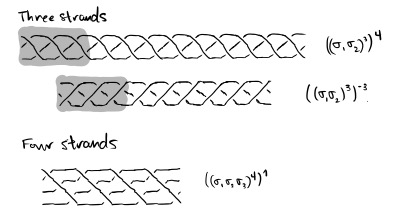In order to simplify Kirby calculus proofs, one can use a box notation which indicates a number of full twists up to sign. In the scenario of two strands with twist boxes, it is straightforward to draw the corresponding picture.
Let's assume that we have three strands with -3 and 4 full twists. I am very confused when I have tried to draw these diagrams.
How can we draw them explicitly? What is the algorithm? Any reference for explicit drawings would be useful.

